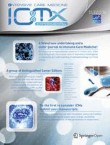Neutrophil gelatinase-associated lipocalin does not originate from the kidney during reperfusion in clinical renal transplantation
Acute Kidney Injury (AKI) is a common clinical complication. Plasma/serum neutrophil gelatinase-associated lipocalin (NGAL) has been proposed as a rapid marker of AKI. However, NGAL is not kidney-specific. It ...
